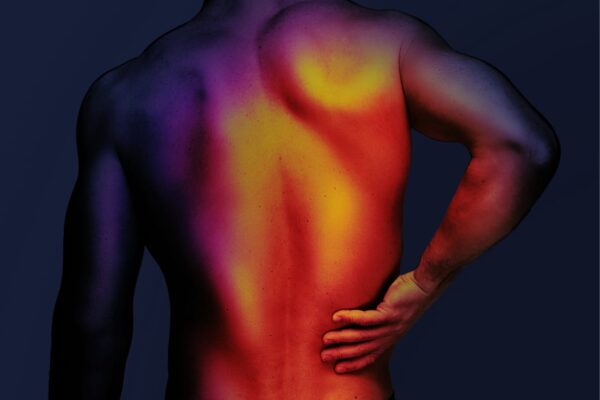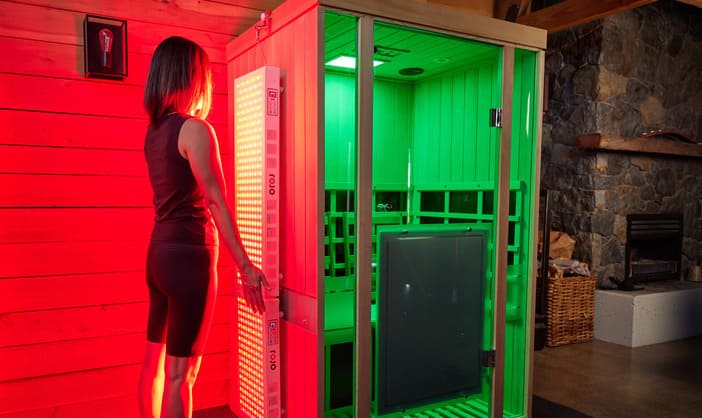In the health and wellness space, there’s a growing interest in harnessing the therapeutic potential of light. Two popular modalities that are rapidly growing in popularity are Far Infrared Saunas and Red Light Therapy. While both are hailed for their remarkable benefits, they operate on distinct principles and offer unique advantages. In this blog, we’ll delve into the world of light therapy, exploring the differences between these two approaches and shedding light on the wavelengths that power them. It’s essential to note that they aren’t rivals; rather, they complement each other, serving different purposes for holistic well-being.
Understanding Light Wavelengths
To comprehend the distinctions between Far Infrared Saunas and Red Light Therapy, we must first grasp the concept of light wavelengths and how they interact with the human body.
Far Infrared Light
Far Infrared (FIR) light falls within the electromagnetic spectrum, specifically in the range of 3 to 1000 micrometers. It’s invisible to the human eye, and its unique characteristic is its ability to penetrate deep into the body, reaching up to several inches beneath the skin’s surface. FIR is often referred to as “thermal radiation” because it primarily generates heat when absorbed by the body. It’s the same type of heat we feel from the sun but without the harmful UV rays.
Red Light and Near Infrared Light
Red Light Therapy, on the other hand, primarily utilizes Red Light (wavelengths between 620 to 700 nanometers) and Near Infrared Light (wavelengths between 700 to 1100 nanometers). Unlike FIR, these wavelengths are visible to the human eye. Red Light Therapy devices emit these specific wavelengths, which are known to interact with cells and tissues, promoting various healing processes.
Far Infrared Saunas – The Heat Therapy
Let’s begin by taking a closer look at Far Infrared Saunas, which have been a wellness staple for years, renowned for their ability to induce profuse sweating and promote relaxation.

Detoxification
One of the most celebrated advantages of Far Infrared Saunas is their detoxifying effect. As your body heats up, you sweat profusely, eliminating toxins, heavy metals, and other impurities through your pores. A study published in the Journal of Environmental and Public Health (2012) found that sweat from individuals using FIR saunas contained various toxins, indicating its efficacy as a detoxification method.
Relaxation and Pain Relief
Far Infrared Saunas also help relax muscles, reduce stress, and alleviate pain. The heat penetrates deep into the muscles, promoting increased blood flow and reducing tension. This can be particularly beneficial for individuals with chronic pain conditions, such as fibromyalgia or arthritis.
Weight Loss
Believe it or not, spending time in a Far Infrared Sauna can also aid in weight loss. The increased heart rate and sweating can burn calories, although it’s not a replacement for a healthy diet and exercise.
Red Light Therapy – The Cellular Rejuvenation
Now, let’s explore Red Light Therapy, a non-invasive modality gaining popularity for its remarkable cellular benefits.

Skin Health and Beauty
Red Light Therapy has shown exceptional promise in promoting skin health and rejuvenation. It stimulates collagen production, reduces wrinkles, and can help treat conditions like acne and psoriasis. A study published in the Journal of Clinical, Cosmetic, and Investigational Dermatology (2015) highlighted the positive effects of red light on skin aging.
Enhanced Cellular Function
The wavelengths used in Red Light Therapy penetrate the skin, reaching the mitochondria of cells. This boosts energy production and can enhance cellular function, making it beneficial for athletes and those seeking overall wellness improvements.
Pain Management
Similar to Far Infrared Saunas, Red Light Therapy can also provide pain relief, particularly for musculoskeletal pain. It reduces inflammation and stimulates the release of endorphins, the body’s natural painkillers.
Complementary Healing
It’s crucial to understand that Far Infrared Saunas and Red Light Therapy are not mutually exclusive options; rather, they can complement each other to create a holistic wellness routine.
For example, you could start with a session in a Far Infrared Sauna to promote detoxification and relaxation. Following that, a Red Light Therapy session can be used to target specific skin or cellular health concerns. By combining these therapies, you can enjoy a well-rounded approach to self-care.
PubMed Studies on Far Infrared Saunas and Red Light Therapy
- Far Infrared Sauna Study: A study published in the Journal of Environmental and Public Health in 2012 titled “Arsenic, Cadmium, Lead, and Mercury in Sweat: A Systematic Review” concluded that sweating induced by using a Far Infrared Sauna can facilitate the removal of heavy metals and toxins from the body.
- Red Light Therapy Study: The Journal of Clinical, Cosmetic, and Investigational Dermatology published a study in 2015 titled “A Controlled Trial to Determine the Efficacy of Red and Near-Infrared Light Treatment in Patient Satisfaction, Reduction of Fine Lines, Wrinkles, Skin Roughness, and Intradermal Collagen Density Increase.” The study highlighted the positive effects of red light on skin aging, with improvements in wrinkles and collagen density.
The Bottom Line
Far Infrared Saunas and Red Light Therapy offer distinct yet complementary benefits for those seeking to improve their well-being. Far Infrared Saunas harness the power of deep-penetrating heat to detoxify and relax the body, while Red Light Therapy focuses on cellular rejuvenation and skin health using specific light wavelengths.
The choice between these therapies depends on your goals and preferences. For a comprehensive wellness routine, consider incorporating both into your self-care regimen. Remember, there’s no “best” option; what matters is finding what works best for you and your unique needs. As the science behind light therapy continues to evolve, we can anticipate even more exciting discoveries and applications in the future.

